- Home
- Financial Statements
- Notes 4 - 17
NOTES 4 - 17
4. TRANSITION DISCLOSURE
The Group
A reconciliation between the carrying amounts under IAS 39 to the balances reported under IFRS 9 as at 01 July 2018 is, as follows:
THE BANK
The reconciliation between the closing provision for impairment in accordance with IAS 39 to the opening loss allowance determined in accordance with IFRS 9 for the above financial instruments on 1 July 2018 is as follows:
5 NET INTEREST INCOME
5(a) Interest income
6. NET FEE AND COMMISSION INCOME
The asset management fees are earned on fiduciary activities, where the Group holds or invests in assets on behalf of its customers.
7. NET GAIN FROM DERECOGNITION OF FINANCIAL ASSETS MEASURED AT AMORTISED COST
During the year under review, the Bank sold some assets measured at amortised cost, as these assets were no longer in line with the Bank's policy due to risks associated with these assets.
8(a) NET TRADING INCOME
9. NET IMPAIRMENT LOSS ON FINANCIAL ASSETS
10. PERSONNEL EXPENSES
11. OTHER OPERATING EXPENSES
12. TAXATION
Income tax is calculated at the rate of 15% (2018: 15% , 2017:15%) for the Group and the Bank on the profit for the year as adjusted for income tax purposes. The Bank, is however entitled to a tax credit equivalent to 80% of Mauritius tax payable in respect of its foreign source income (Segment B) thus reducing its maximum effective tax rate on segment B to 3%.
Finance Act 2018 has prescribed new tax measures applicable to banks as follows:
- Distinguishing between Segment A and Segment B to be abolished
- Chargeable income up to MUR 1.5bn - Taxed at 5%
- Chargeable income over MUR 1.5bn - Taxed at 15%, but subject to satisfying certain conditions; banks may be taxed at reduced rate of 5% or gratuated rates.
- The above is effective as from financial year ended 30 June 2020.
Corporate Social Responsibility fund
Special levy
Up to 30 June 2018, special levy was calculated at (a) 10% on chargeable income for Segment A; and (b) 3.4% of its book profit and 1% of its operating income for Segment B, derived during the previous year. Operating income means the sum of net interest income and other income before deducting non-interest expense.
Special levy on banks was amended under the Finance Act 2018 and 2019 and is now governed under the VAT Act. For the year under review, special levy has been reclassified
under operating expenses. (Note 11)
Total tax paid (including levy, APS and CSR) during the year ended 30 June 2019 was MUR 96.3m (2018: MUR 230.5m, 2017: 143.5m).
12 (a) Statements of financial position
12(d) Deferred tax
13. DIVIDENDS
Ordinary Shares
With respect to the year ended 30 June 2019, the Directors proposed that a dividend of MUR 1.65 (2018: MUR 1.50, 2017: MUR 1.00 ) per share be paid to the holders of Ordinary shares with respect to the year ended 30 June 2018. The Board of Directors approved the dividend on 20 September 2018 and it was paid in October 2018. Total dividend paid is MUR 186M (2018: MUR 160M; 2017: MUR 100M).
Class A Shares
With respect to the year ended 30 June 2019, the Directors proposed that a dividend of MUR 14.71 (2018: MUR 14.00 ; 2017: MUR 14.25) per share be paid to the holders of Class A shares. The Board of Directors approved the dividend on 20 September 2018 and 8 February 2019 respectively, and these were paid in October 2018 and March 2019 respectively. Total dividend paid is MUR 147M (2018: MUR 140M ;2017: MUR 143M).
14. CASH AND CASH EQUIVALENTS
Cash and cash equivalents’ include notes and coins on hand, unrestricted balances held with Central Bank and highly liquid financial assets with original maturities of three months or less from the date
of acquisition that are subject to an insignificant risk of changes in their fair value, and are used by the Group and the Bank in the management of its short-term commitments
Note 1: Unrestricted balances with the Central Bank represent amounts above the minimum cash reserve requirement.
Allowance for impairment losses
The balances were classified in stage 1 and 12-month ECL was calculated hereon.
15. DUE FROM BANKS
The collateralized placements relate to placements held with two local banks on which Government bonds and notes are pledged as security. The fair value of the collaterals at 30 June 2019 was MUR 9.4bn (2018: MUR 5.6bn).
THE GROUP AND THE BANK
The table below shows the credit quality and the maximum exposure to credit risk based on the Bank's internal credit rating system and year-end stage classification. The amounts presented are gross of impairment allowances.
The financial assets were classified in Stage 1 and 12 month ECL was calculated hereon.
External rsting grade
16. DERIVATIVE FINANCIAL INSTRUMENTS
(a) THE GROUP
The Group and the Bank have positions in the following types of derivatives:
Forward contracts
Forward contracts are contractual agreements to buy or sell a specified financial instrument at a specific price and date in the future. Forward are customised contracts transacted in the over-the-counter market.
Spot Position
The current balance on spot position account reflect the bought/sold amounts (FX deals) in original currencies and equivalent amounts corresponding to the prevaling FX spot ’Accounting’ rate as of the settlement date.
Option Linked Notes
Options are contractual agreements that convey the right, but not the obligation, for the purchaser either to buy or sell a specific amount of a financial instrument at a fixed price, either at a fixed future date or at any time within a specified period. These options do not bear any downside risk as the Group will not exercise the options should these prove unfavourable to the Group.
Index linked notes
Index linked notes are investment products that combine a fixed income investment with additional potential returns that are tied to the performance of equities. Equity linked notes are usually structured to return the initial investment with a variable interest portion that depends on the performance of the linked equity.
Swaps
Swaps are derivatives in which two counterparties exchange cash flows of one party's financial instrument for those of the other party's financial instrument. The benefits in question depend on the type of financial instruments involved.
Option contracts
Option contracts give the buyer the right, but not the obligation, to buy (in the case of a call) or sell (in the case of a put) the underlying asset at a specific price on or before a certain date.
17(a). LOANS AND ADVANCES TO BANKS
The table below shows the credit quality and the maximum exposure to credit risk based on the Bank's internal credit rating system and year-end stage classification. The amounts presented are gross of impairment allowances.
